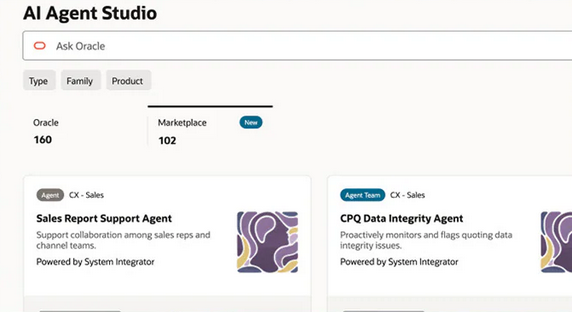The New STEM Imperative: How AI Is Reshaping High School Education
A decade ago, the advice for any bright, college-bound high school student with an interest in STEM was almost universal: learn to code. This mantra echoed through guidance counselor offices, parent-teacher conferences, and career day presentations. Python was hailed as the new Latin, a foundational language that promised access to a future-proof career. A degree in computer science was seen as a golden ticket, a direct pass to a stable, lucrative, and comfortable life in the burgeoning tech industry. The path seemed clear, linear, and incredibly promising.
Fast forward to today, and the brilliant glow of that singular path has begun to dim. The confident directive to “learn to code” now carries a faint, almost archaic echo, sounding more like a suggestion to “learn shorthand” in an age of digital recorders. The rise of sophisticated artificial intelligence has fundamentally altered the landscape. While today’s teenagers are still drawn to the allure of a tech career, they no longer see a single, straightforward path to get there. The very jobs that seemed so secure—those centered on pure coding—are now the ones that AI seems poised to automate.
As intelligent systems become adept at writing, debugging, and optimizing code, a new question emerges: What skills truly matter? With a lack of AP classes in niche, AI-driven fields like “vibe coding,” students and their teachers are scrambling to adapt to a rapidly changing reality. The focus is shifting from the mechanics of building technology to the nuanced art and science of wielding it. High school STEM education is undergoing a quiet but profound revolution, pivoting away from rote coding and toward fields that blend computing with critical analysis, ethical interpretation, and sophisticated data literacy.
The Fading Allure of a Purely Coding-Focused Path
The foundation of the modern tech world was built on code, and for decades, the demand for skilled programmers seemed insatiable. Tech giants like Google fueled a boom that sent countless students into computer science programs. However, the very industry that created this demand is now pioneering the tools that are changing its nature.
“There’s a move from taking as much computer science as you can to now trying to get in as many statistics courses as possible,” observes Benjamin Rubenstein, an assistant principal at New York’s Manhattan Village Academy. With two decades of experience in New York City classrooms, Rubenstein has had a front-row seat to the evolution of the “STEM pipeline,” watching it transform from a straight, rigid conduit into a complex, branching network of interdisciplinary pathways. For his students, the pivot toward statistics isn’t just a trend; it feels more practical, more aligned with the skills needed to thrive in an AI-driven world.
This anecdotal shift is backed by broader trends. After a prolonged surge, universities are witnessing a cooling-off period for computer science. The excitement is giving way to a more pragmatic assessment of the future.
According to a survey by the nonprofit Computing Research Association, the number of computer science, computer engineering, and information degrees awarded in the US and Canada saw a notable decline of approximately 5.5 percent in the 2023–2024 academic year compared to the previous year.
This isn’t to say computer science is becoming irrelevant. Rather, its role is being redefined. It’s becoming a foundational layer, much like basic literacy, rather than the ultimate end goal for every aspiring technologist.

The Ascent of Data Literacy
As interest in pure computer science plateaus, another field is experiencing a remarkable surge in popularity: data. The appetite for data-centric skills is becoming increasingly visible at the high school level, a clear indicator of where students believe the future lies. A look at the most recent Advanced Placement (AP) exam registrations reveals a compelling story.
Data literacy is quickly becoming the new cornerstone of a competitive STEM education, sitting alongside, and in some cases surpassing, traditional coding skills in importance.
| AP Exam Subject | 2024 Exam Registrations |
|---|---|
| AP Statistics | 264,262 |
| AP Computer Science Principles | 175,261 |
| AP Computer Science A | 98,136 |
The numbers are clear: students are flocking to statistics in record numbers. This shift reflects a sophisticated understanding of the current technological moment. AI models are data-hungry engines; they are trained on massive datasets and produce even more data in their outputs. The ability to generate code is becoming commoditized by AI, but the ability to frame the right questions, interpret the data, analyze the outputs, and understand the ethical implications of an algorithm’s conclusions remains a uniquely human skill.
“Students who see themselves as STEM people will pursue whatever they think makes them a commodity, something valued in the workplace,” Rubenstein explains. “The workplace can basically shift education if it wants to by saying, ‘Here’s what we need from students.’ K–12 will follow suit.” The message from the workplace is becoming increasingly clear: we need people who can think critically with and about data.
Reinventing the Classroom: From Abstract Theory to Applied Intelligence
To meet this new demand, forward-thinking educators are redesigning their curricula to be more applied, interdisciplinary, and purpose-driven. The goal is no longer just to teach mathematical formulas or programming languages in isolation, but to show students how these tools can be used to understand and shape the world around them.
Benjamin Rubenstein’s school, Manhattan Village Academy, serves as a powerful example of this educational evolution. While he still requires every student to take a computer science course before graduation to ensure they “understand what’s going on behind the scenes,” the true innovation is happening in the math department. The school now offers an Applied Mathematics class where students don’t just solve abstract problems; they analyze real-world data from the New York Police Department to identify patterns, evaluate policies, and propose data-backed changes. This approach teaches statistics, data visualization, and critical thinking while also engaging students in civics and social justice.
Furthermore, the school has introduced an Ethnomathematics course, which explicitly links mathematical concepts to culture, history, and identity. This innovative class challenges the notion of math as a sterile, disconnected subject, demonstrating how it is woven into the fabric of human experience across different societies. “We don’t want math to feel disconnected from real life,” Rubenstein says.
This shift represents a fundamental change in pedagogy. Education is moving beyond compartmentalized subjects and toward a more holistic model where students are encouraged to draw on multiple disciplines to solve complex problems. As Rubenstein puts it, “Students can’t think of things as compartmentalized anymore. You need multiple disciplines to make good decisions.” In this new paradigm, computer science classes are no longer the sole domain of tech education. They now share the stage with forensics electives, science-fiction labs, and robust data-ethics debates, all designed to build well-rounded thinkers.
The Educator’s Co-Pilot: Leveraging AI in the Classroom
The rise of AI presents a significant challenge for educators, who must now prepare students for a future defined by machine learning while simultaneously managing how easily these powerful tools can be used to short-circuit the learning process. The fear of students using AI to simply generate answers without understanding the underlying concepts is real. However, a growing number of educators, like Rubenstein, see a more optimistic future where AI becomes a genuine ally—a co-pilot for both teachers and students.
Instead of a threat, AI could become an invaluable tool for creating more personalized, effective, and engaging learning experiences. Rubenstein imagines classrooms where algorithms don’t replace teachers but augment their abilities, making education more individualized and applied than ever before.
Potential applications for AI as an educational ally include:
- Personalized Learning Paths: AI systems could assess a student’s unique strengths and weaknesses, tailoring curricula and practice problems to their specific needs. This would allow advanced students to accelerate while providing targeted support for those who are struggling.
- Real-Time Concept Mastery Analysis: Intelligent algorithms could help teachers identify, in real-time, which students have grasped a concept and which ones require more time or a different explanatory approach, enabling immediate intervention.
- Interest-Aligned Project Suggestions: AI could suggest data projects and research topics that align with a student’s personal interests—from sports analytics to climate change modeling—making learning more relevant and motivating.
- Enhanced Accessibility: AI tools can provide real-time translation, generate transcripts, and offer other support systems to help students with diverse learning needs access the curriculum more effectively.
This vision is part of the same fundamental shift: a move toward learning how to strategically interpret and use technology, not just how to build it from scratch.
Thinking With AI: The Next Frontier of Scientific Literacy
At the University of Georgia, science education researcher Xiaoming Zhai is already building and testing what this future could look like. His team develops what he calls “multi-agent classroom systems”—sophisticated AI assistants designed to interact with both teachers and students to model the complex process of scientific inquiry. These systems can play different roles, such as a collaborator that helps brainstorm hypotheses or a skeptic that challenges a student’s conclusions, teaching them to think more critically and rigorously.
Zhai’s work is pioneering a new kind of literacy: not just understanding how to operate an AI, but how to genuinely think with it. He argues that AI should not be treated as a separate subject or an amalgamation of existing STEM disciplines but as a fundamental, integrated part of the core scientific process itself.
“The bar for coding has been lowered,” Zhai states, recounting the story of a visiting scholar who, despite having never written a single line of code, used generative AI to build a fully functional science simulation. This anecdote powerfully illustrates the new reality. “The real skill now is integrating AI with your own discipline.”
According to Zhai, the next generation of scientists will use algorithms in the same way their predecessors used microscopes and telescopes—as essential tools to reveal hidden patterns, test novel ideas, and push the boundaries of human knowledge. The microscope did not replace the biologist; it empowered them to see a world that was previously invisible. Similarly, AI will not replace the scientist, engineer, or analyst; it will empower them to solve problems of a scale and complexity previously unimaginable.
Cultivating a Generation of Critical AI Users
As the chair of a national committee on AI in science education, Zhai is advocating for an explicit shift in how schools approach this technology. The objective is not merely to teach students how to harness AI’s incredible precision and computational power but also to remain acutely aware of its inherent limitations and blind spots.
“AI can do some work humans can’t,” he says, “but it also fails spectacularly outside its training data.” This is the critical lesson for the next generation. Students must learn that AI is not an infallible oracle but a tool built by humans, trained on human-generated data, and therefore susceptible to human biases and errors.
The goal is to foster a healthy, productive balance between fluency and skepticism. “We don’t want students who think AI can do everything or who fear it completely,” Zhai emphasizes. “We want them to use it responsibly.” This means teaching them to interrogate an AI’s output, to question the data it was trained on, and to understand when its conclusions should be trusted and when they should be challenged.
This new educational mandate is quietly rewriting what STEM means in schools like Rubenstein’s. The most valuable skill is no longer simply coding the machine. The truly indispensable skill of the future is understanding the machine’s logic well enough to guide it, question it, and ultimately, steer it toward intelligent and ethical outcomes. AI is here, and today’s students are not being trained to fight it; they are learning to read it, collaborate with it, and lead it.








Comments